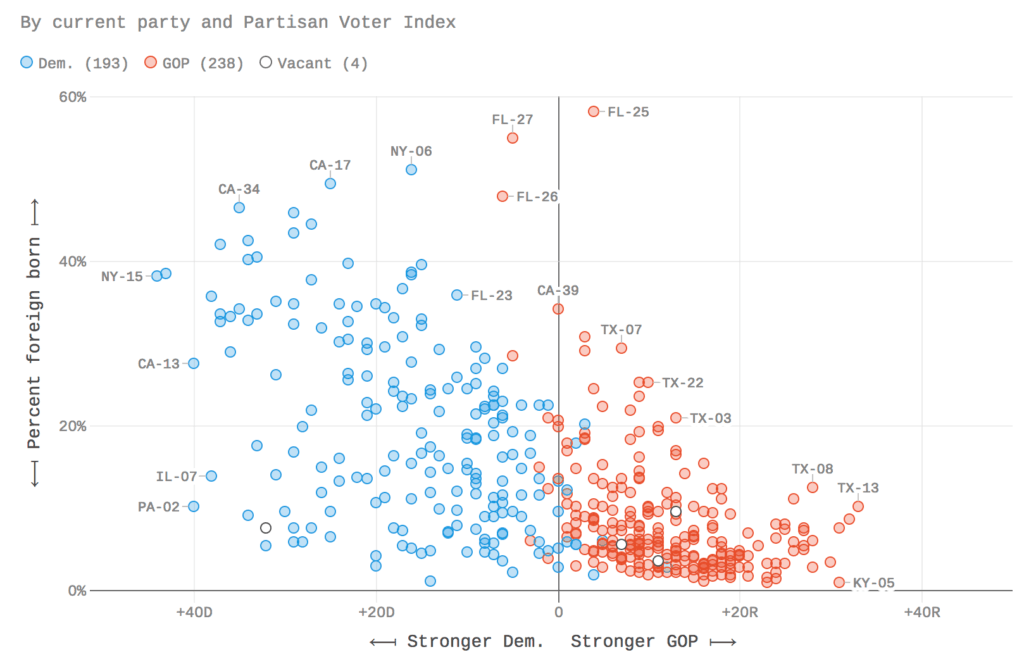Results 1 to 1 of 1
Thread Information
Users Browsing this Thread
There are currently 1 users browsing this thread. (0 members and 1 guests)
-
08-30-2018, 12:10 AM #1
Study: Foreign Nationals on Sanctuary City Voter Rolls More Likely to Register Democr
Study: Foreign Nationals on Sanctuary City Voter Rolls More Likely to Register Democrat than Republican
August 29, 2018
John Binder
Foreign nationals who are on the voter rolls in sanctuary cities that protect illegal aliens from federal immigration enforcement are more likely to be registered Democrats than Republicans, new research reveals.
As Breitbart News reported, the Public Interest Legal Foundation (PILF) released a study that discovered how sanctuary cities and a states’ implementation of the National Voter Registration Act incentivizes foreign nationals to register to vote in U.S. elections.
Specifically, in 13 sanctuary cities across seven states, a total of about 3,120 foreign nationals either registered to vote or were removed from the voter rolls between 2006 and 2018.
In the few cases detailed by the PILF research where party registration is revealed, the noncitizens registered to vote were vastly more likely to be Democrats than Republicans. For example, 92 of the noncitizens registered to vote out of the 264 registered and removed over the last decade in San Diego County, California were registered Democrats. Only 35 had registered Republican, while 119 had not registered with a political party.
John Binder 👽
@JxhnBinder
1,334 noncitizens on the voter rolls in Fairfax County, VA alone.
https://www.breitbart.com/big-govern...ctuary-cities/
3:24 PM - Aug 28, 2018
Similarly, of the 28 noncitizens who had registered to vote and self-reported to remove themselves fromthe voter rolls in San Francisco County, California, a total of nine had registered as Democrats. None registered as Republicans, while 19 had not registered with a specific party.
In Riverside County, California, where six noncitizens had registered to vote and self-reported to remove themselves from the voter rolls in the last decade, three had registered as Democrats, two did not register with a political party, and only one was a registered Republican.
The research discovered that localities with the greatest likelihood of having foreign nationals registered to vote were those that had booming foreign-born populations, areas where Department of Motor Vehicles agents broadly offered voter registration to all customers, and regions with large immigrant populations that speak a foreign language other than Spanish.
The U.S. is on track to import about 15 million foreign-born voters by the year 2038 should the country’s current legal immigration system go unreformed. That is nearly quadruple the size of the annual number of U.S. births; about four million American babies are born every year.
Analysis conducted by Axios’s Chris Canipe and Andrew Witherspoon shows the overwhelming trend of foreign-born populations voting Democrats into office over Republicans.

Likewise, an analysis from Georgetown University, the University of California, and Banque de France researchers discovered that immigration to the country continuously increases Democrats’ chances of winning elections:
On average across election types, immigration to the U.S. has a significant and negative impact on the Republican vote share, consistent with the typical view of political analysts in the U.S. [Emphasis added]
This average effect – which is driven by elections in the House – works through two main channels. The impact of immigration on Republican votes in the House is negative when the share of naturalized migrants in the voting population increases. Yet, it can be positive when the share of non-citizen migrants out of the population goes up and the size of migration makes it a salient policy issue in voters’ minds. [Emphasis added]
These results are consistent with naturalized migrants being less likely to vote for the Republican Party than native voters and with native voters’ political preferences moving towards the Republican Party because of high immigration of non-citizens. This second effect, however, is significant only for very high levels of immigrant presence. [Emphasis added]
In 2016, the legal and illegal immigrant population reached a record high of 44 million. By 2023, the Center for Immigration Studies estimates that the legal and illegal immigrant population of the U.S. will make up nearly 15 percent of the entire U.S. population.
Mexico has the largest group of legal and illegal foreign nationals in the U.S., with 1.1 million immigrants from the country arriving in the U.S. between 2010 and 2016. Mexican nationals make up roughly one in eight new arrivals to the U.S. On average, every one Mexican immigrant brings six foreign relatives with them to the country through chain migration.
https://www.breitbart.com/big-govern...an-republican/Support our FIGHT AGAINST illegal immigration & Amnesty by joining our E-mail Alerts at https://eepurl.com/cktGTn
Similar Threads
-
U.S. Election Meddling: Nationwide Voter Fraud, Importation of 15M Foreign-Born Voter
By lorrie in forum General DiscussionReplies: 3Last Post: 07-21-2018, 03:18 PM -
Study: DACA Amnesty Would Bring 1.4M Foreign Nationals to U.S., Trigger Never-Ending
By Jean in forum illegal immigration News Stories & ReportsReplies: 1Last Post: 09-28-2017, 11:57 AM -
War hero, 91, set to be stricken from fla. Voter rolls
By JohnDoe2 in forum General DiscussionReplies: 5Last Post: 06-01-2012, 01:53 PM -
ASK YOUR P.D. to verify voter rolls vs. felon rolls
By gospelmidi in forum illegal immigration News Stories & ReportsReplies: 2Last Post: 10-28-2010, 12:32 AM -
Voter Rolls Swelling in Pa.
By AirborneSapper7 in forum Other Topics News and IssuesReplies: 1Last Post: 04-08-2008, 08:20 AM


 2Likes
2Likes LinkBack URL
LinkBack URL About LinkBacks
About LinkBacks





 Reply With Quote
Reply With Quote


Giant Laken Riley Billboard Truck Circles Biden’s Speaking Venue...
04-23-2024, 09:52 PM in Americans Killed By illegal immigrants / illegals